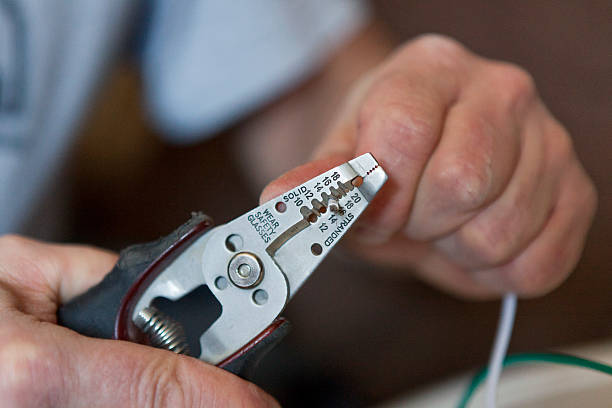

Don't Get Zapped: A Comprehensive Guide To Frayed Electrical Cord Safety

Frayed and damaged electrical cords present severe safety hazards in homes and workspaces. However, arming yourself with the fundamental knowledge and taking preventative measures can significantly reduce these risks.
Get equipped to proactively identify and replace worn cords before they spark electrical fires, deliver shocks, or trigger other accidents by following these practical inspection, maintenance, and replacement protocols. Also, you can dramatically improve electrical safety while conserving time, money, and even lives.
This guide explores the dangers of frayed cords, how to identify them, and, most importantly, how to prevent associated accidents and injuries.
1. Preventing Electrical Accidents through Education

Education acts as the pillar that can stop accidents from happening. Recognizing subtle signs of cord decay along with a dynamic inspection routine gives one the knowledge to avoid electrical hazard problems before they become critical. This involves watching for ends of life with overt indications such as fraying, cracking, discoloration, and exposed wiring, which usually manifest significantly before failure.
Hence, by training, organizations must ensure that each employee remains vigilant while working in spaces. So, this understanding of electrical principles, together with protocols for speaking up when potential issues do get spotted, is the way forward to avoid any unsafe conditions. Regular awareness of power cords such as Nema 5-15p significantly contributes to maintaining a safe working environment for electrical gadgets and appliance users.
2. Reducing Fire Hazards
In addition to posing shock risks, frayed power cords also rank among the most common causes of residential and commercial fires. This often results from internal damage that remains invisible until the insulation deteriorates substantially. At this point, hazardous sparks or excessive heat buildup can ignite nearby surfaces. While shocks rarely prove fatal, electrical fires claim thousands of lives annually, along with billions in property damage.
Moreover, tips like coiling excess length, avoiding pinches, rating extension capacity, and examining connections equip readers to minimize strain and heat-inducing damage. Proper handling and care reinforce insulation integrity to reduce electrical fire risks significantly.
3. Promoting Proactive Safety Awareness
Changing safety culture begins by promoting more conscientiousness surrounding electrical infrastructure monitoring. After all, damage accumulates gradually over months or years of invisible wear.
Furthermore, there are some tips to help make cord safety more of a regular habit. For example, you can check cords when you're dusting or when you first buy an appliance. This builds in looking at cords on purpose instead of just once in a while.
It also helps to set reminders to check cords at certain times. Hence, keeping a log of inspecting and maintaining cords helps you stay on track, too. After a while, checking cords often will feel normal, not like a hassle. Additionally, purchasing for replacements when needed can streamline the process, ensuring a quick and efficient response to identified issues.

4. Safeguarding Valuables from Fire Damage
Electrical fires destroy valuables and treasured belongings in seconds, often destroying buildings. Typically sparked by faulty wiring conditions, these blazes rapidly ravage homes, storage units, server rooms, machinery, and inventory.
Furthermore, some other tips can help protect valuable data. With some planning, you can reduce how bad it is if an electrical fire does happen since this will give you peace of mind. Additionally, the best thing is to catch cord problems early by following the advice already given. That stops fires before they start.
Also, using a flat power strip to plug in multiple devices can help. power strip keeps cords organized and safer. This lowers the chances of cord damage and fire risks.
5. Ensuring Personal Safety
In addition to the destruction of property, electrical equipment exposes the lives of occupants to further danger from electrical shocks and burns during fault scenarios. These are painful, horrifying, and fatal dangers as long as the damaged cords remain plugged into power sockets.
Otherwise, tips include putting in GFCI outlets, avoiding overloads, removing water risks, placing guards on high-traffic wires, and locking unsafe circuits until fixed—all help to limit injury opportunities. When electrical risks cannot be removed, enacting prudent safeguards curbs needless bodily harm. Besides, the timely replacement and inspection of switch power cords by new replacements can prevent possible damages from leading to insecurity.

6. Preserving Cords & Saving Replacement Costs
When properly cared for, electrical cords supply years of steadfast service. Furthermore, neglecting cables causes them to wear out faster. Similarly, when the plastic gets brittle, the copper wires inside get frayed, and the protective coatings wear away over time. Even if the cable looks fine outside, the wires inside can still make accidental contact and cause sparks or shorts.
Furthermore, spending a few extra bucks to get well-insulated cords resistant to oils, corrosion, and fatigue indirectly saves on replacement costs. Proper handling of even the most extensively used cords ensures that they function for years beyond the given timeframe without posing a safety concern. In addition, with a 20 amp power strip, there is the distribution of enough power for multiple devices to be secured, and reliability is ensured.

Wrapping Up
Regular surveillance coupled with preventative upkeep of electrical cords assists in upholding security, assets, and lives. Thus, detecting deterioration prematurely and tackling it swiftly assists persons and groups in staying alert to the dangers of electrical fires and shocks.
Moreover, elevating electrical safety via schooling, strategizing, and accountable deeds aids in safeguarding cherished belongings and inhabitants against avoidable disasters. The procedures delineated in this extensive manual provide a clear-cut avenue toward substantially bettering infrastructure durability, hazard deterrence, and accountable governance over crucial systems.
